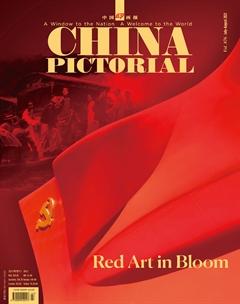A Century of Red Plays
by Fu Jin
In the early 20th century, Chen Duxiu (1879-1942), a founding figure of the Communist Party of China (CPC), published the article On Drama in both classical and vernacular Chinese. Expounding on the authors ideas on the reform of traditional Chinese opera, it became the most in-depth and widely circulated classic text about usage and transformation of traditional drama in modern Chinese history. At the same time, the social improvement and modernization movement was rising in China. Chen suggested that the influence of drama on the spirit of ordinary people be taken seriously to implant new ideas of the times in their minds. He also noted that many ideas of traditional drama had become incompatible with modern thought and advocated eliminating some plays, plot formats, and stock characters.
As Chen explained in his essay, he pondered how to optimally utilize traditional Chinese opera as an artistic style with potential political function while maintaining an attitude of appreciation and doubt towards more mature and traditional opera. This is what the CPC has done to the development of traditional Chinese opera since its founding in 1921. Traditional Chinese opera was regarded as an important means to spread and construct ideology across different historical periods, and many important policy documents introduced in different periods drove creation of many “red plays” with revolutionary themes. When dealing with the relationship between traditional opera and contemporary society, the CPC has always adhered to the principle of “inheriting its essence and eliminating its dregs.”
From the initial local regime established by the CPC in Jiangxi, red plays have continued to this day, throughout the entire history of the CPC. In the early stage of the Red Army, opera works celebrating military victories became an important method of inspiring the Red Army soldiers. After the end of the Long March in the 1930s and the establishment of a stable political power in Yanan, however, more wide-ranging themed red plays were needed than those aiming to inspire the military operations. The organs of the CPC Central Committee, the government of the revolutionary base area, the army, and the local people in Yanan preferred high-quality plays over simple and preachy educational content.
Red plays in the Yanan period can be roughly divided into two types. One used the artistic style of Peking Opera, which was generally considered to represent the highest level of traditional Chinese opera at that time. Forced to Join the Liangshan Mountain Rebels and Three Sieges of Zhu Village were both Peking Opera productions based on the Ming Dynasty (1368-1644) novel Water Margin, one of Chinas four great classic novels. The novel portrays a group of “heroes” rising up to tyranny and oppression by gathering in Liangshan, but the effort ultimately ends in failure when they accept amnesty and surrender. Other plays were created using Shaanxi Opera, Meihu Opera, or Yangge Opera, all popular in northern Shaanxi. These included The White-Haired Girl about Yang Xier, a tenants daughter who flees into the mountains and jungles after being sold to landlord Huang Shiren. Malnutrition, especially a lack of sodium, causes her hair to turn completely white. She is eventually rescued by the Red Army. This was the first period that red plays started shouldering an important publicity role and showed signs of maturity.
On October 1, 1949, the Peoples Republic of China was founded. The new government quickly realized that to ensure the continued development of traditional opera while popularizing new red plays, traditional opera should not be relegated to a publicity and education tool for specific policies or become isolated even if the classic repertoire of traditional opera did not conform to the ideological orientation of the new society as a whole. Under the guidance of new artistic concepts, the popularity and influence of red plays peaked in the 1960s. Many new Peking Opera performances with rich artistic expression and appeal as well as inherent political color and narrative characteristics of red plays emerged. After years of careful refinements, these new operas, with carefully chosen subjects about heroic deeds of outstanding CPC members in modern and contemporary times, started being called “model operas” and served as templates for red plays in terms of ideology and art.
In the past decade or so, red play creation reached a new stage. Every year, hundreds of new red plays have appeared including the Henan Opera play Jiao Yulu, which celebrates a model county Party secretary serving the people, the Shaanxi Opera play Wang Gui and Li Xiangxiang, which tells the love story of two rural youth during the revolution, and the Shangdang Bangzi(Wooden Clapper Opera) production A Mother from Taihang Mountains, which tells the touching story of Taihang mother Zhao and her daughter-in-law Lihua rescuing the children of the Eighth Route Army soldiers during the War of Resistance against Japanese Aggression. By taking a more humanistic approach, these excellent red plays have achieved new breakthroughs in many aspects, and have reflected on the fate of human beings, the progress of Chinese history, and the richness and complexity of human nature.
By absorbing and adopting more expressive techniques of traditional opera, such newer works get a wider spread and gain more vitality by connecting with more people. The outstanding achievements of red plays have left a significant mark on Chinese art history across the last century.
Across a century of development, red plays have evolved from focus on publicity and education to spiritual depth and permanent artistic charm. Contemporary works transcend a specific political position, a testament to the maturity of the CPCs artistic concepts. Although some plays still serve as fast-moving products on the stage, the continuous emergence of excellent works is leaving a major mark on the history of contemporary Chinese opera.

